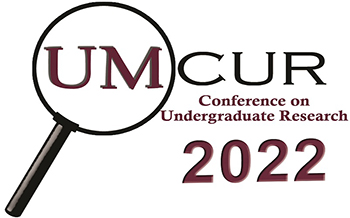Project Type
Poster
Faculty Mentor’s Full Name
Josh Herring
Faculty Mentor’s Department
Education
Abstract / Artist's Statement
Learning Assistants (LAs) are undergraduate students who complete a course and return to assist instructors in creating an active learning environment. From multiple studies, pedological and active learning techniques improve student retention, exam scores, and student participation. During the fall semester of 2021, I was an LA for two introductory courses, Pre-Calculus (M151) and Introduction to Honors (HONR120). In M151, I tested new active learning activities like practice problems, whiteboard activities, and Desmos activities. M151 prepares students for calculus and advanced science courses by building on previous algebraic and geometric theorems to manipulate these processes. M151 is “traditional” because in other S.T.E.M. courses, students use equations, learn about theories, and expand on ideas. HONR120 is for first-year students and provides resources in the honors college. The primary purpose of HONR120 is building a community of Davidson Honors College students. LAs set up activities to get students engaged and work with their peers to achieve this.
The purpose of this presentation is to show that integrating knowledge from “traditional” and community-based courses leads to better interactions. In HONR120, I created lesson plans showcasing discussions and opportunities for students to share their thoughts and projects. In pre-calculus, I integrated community-building practices by working with students individually and sitting down with them.Weekly meetings with Regina Souza and Dr. Tim Nichols helped develop class plans and ideas. Interacting with students allowed me to give feedback to both instructors, telling them about students’ struggles and ways to improve activities. Then, through a survey, I asked whether students were comfortable interacting with me, what activities helped them learn, what I effectively did, and what I could do better. My data showed that I provided a comfortable learning environment, addressed questions, explained strategies for problems, provided help with homework, and was easily approachable.
Category
Social Sciences
Learning Assistant Poster Presentation for Introduction to Honors and Pre-Calculus
Learning Assistant Poster.ppt (3467 kB)
Revised Learning Assistant Poster
Cultivating an Active Learning Environment in a Traditional and Community based Course
UC South Ballroom
Learning Assistants (LAs) are undergraduate students who complete a course and return to assist instructors in creating an active learning environment. From multiple studies, pedological and active learning techniques improve student retention, exam scores, and student participation. During the fall semester of 2021, I was an LA for two introductory courses, Pre-Calculus (M151) and Introduction to Honors (HONR120). In M151, I tested new active learning activities like practice problems, whiteboard activities, and Desmos activities. M151 prepares students for calculus and advanced science courses by building on previous algebraic and geometric theorems to manipulate these processes. M151 is “traditional” because in other S.T.E.M. courses, students use equations, learn about theories, and expand on ideas. HONR120 is for first-year students and provides resources in the honors college. The primary purpose of HONR120 is building a community of Davidson Honors College students. LAs set up activities to get students engaged and work with their peers to achieve this.
The purpose of this presentation is to show that integrating knowledge from “traditional” and community-based courses leads to better interactions. In HONR120, I created lesson plans showcasing discussions and opportunities for students to share their thoughts and projects. In pre-calculus, I integrated community-building practices by working with students individually and sitting down with them.Weekly meetings with Regina Souza and Dr. Tim Nichols helped develop class plans and ideas. Interacting with students allowed me to give feedback to both instructors, telling them about students’ struggles and ways to improve activities. Then, through a survey, I asked whether students were comfortable interacting with me, what activities helped them learn, what I effectively did, and what I could do better. My data showed that I provided a comfortable learning environment, addressed questions, explained strategies for problems, provided help with homework, and was easily approachable.
